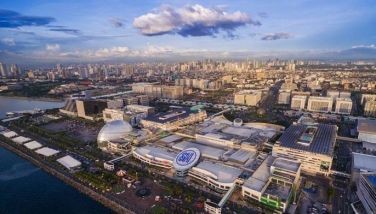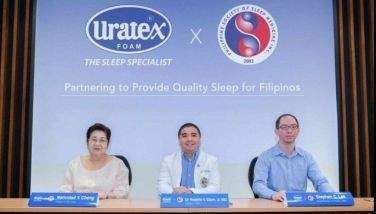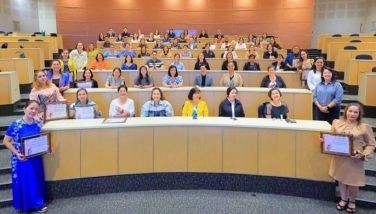Visions of the Founders
On Saturday, Feb. 28, teachers and students of some of the Higher Education Institutions in the university belt in downtown Manila will gather to talk about the origins of their schools.
Dubbed “Visions of the Founders,” the event will feature Paz I. Lucido speaking on Centro Escolar University, Carla P. Falconit on National University, Ma. Eugenia Duran Apostol on the College of the Holy Spirit, Fr. Mateo J. De Jesus OSB on San Beda College, and Lourdes R. Montinola on Far Eastern University.
These schools were among those established at the turn of the 20th century, when the educational system in our country drastically changed course. The new colonial administration did not only introduce a new form of government, but it also revolutionized the delivery of education.
The first formal educational system in our islands was set up by Islamic missionaries, primarily to teach converts how to read the Qur’an. The primary language of education then was Arabic.
The next formal educational system was set up by Spanish missionaries, primarily to ensure that Filipinos would follow the dictates of both Spain and the Roman Catholic Church. In 1863, the Spanish government issued an educational decree that started the first public school system; by 1898 there were more than 2,000 public primary schools. Since Church and State were then inseparable, parish priests actually ran the schools. The primary language of instruction in these schools was Spanish.
When they came to take over our country, the Americans separated the Church from the State. First to take advantage of the situation were Chinese schools. In 1899, the first of several Chinese schools was established, with no relationship to either Church or State and with the sole medium of instruction being Chinese.
Several private schools, not using Arabic, Spanish, or Chinese as languages of instruction but English, were established during the first two decades of the 20th century. These schools did not only have in common their language of instruction nor their foundation dates, but an intense desire to help Filipinos chart their own course in history. Many of them were anti-Spanish not just in language but in thrust. Although some old schools tried to hold on to Spanish as medium of instruction, all schools soon shifted to English, thanks primarily to an American government regulation prohibiting the use of any other language in schools.
The first Filipino to set up a private school fully owned by natives during those times was Mariano Fortunato Jhocson, whose school Colegio Filipino (founded 1900) eventually evolved into what is now National University.
Other schools followed in quick succession.
In 1901 Benedictine monks founded El Colegio de San Beda, which eventually became San Beda College.
In 1907 Librada Avelino and Carmen de Luna founded the Centro Escolar de Señoritas, which eventually became Centro Escolar University.
In 1913 the Missionary Sisters Servants of the Holy Ghost founded the College of the Holy Ghost, which later changed its name to the College of the Holy Spirit.
In 1919 Nicanor Maronilla Seva founded Far Eastern College. In 1928 Nicanor Reyes, Francisco Dalupan, Rafael Roces, Clemente Uson, and Celso Icasiano founded the Institute of Accountancy. These two schools merged in 1934 to become Far Eastern University.
There were a number of other schools founded during those two decades, including what today are known as Manila Central University (1900), Silliman University (1901), Central Philippine University (1905), St. Louis University (1911), University of Manila (1913), St. Theresa’s College Manila (1915), Philippine Women’s University (1919), and Jose Rizal University (1919).
The symposium this Saturday, to be held from 9 a.m. to 12 noon in the auditorium of Far Eastern University, will focus on the visions of some of our educational heroes. We have to marvel at how the Filipino founders at that time, speaking primarily in their vernacular languages and in Spanish, having very little capital and an even smaller pool of qualified teachers, could imagine that Filipinos could teach other Filipinos.
The vision of Nicanor Reyes is representative of the fervent nationalism and faith in the future of those times. He dreamt of establishing a school for accountants who would serve not just the Philippines, but all of Asia. He had every right to think that a Filipino could be a professional, global accountant. In 1927 he was the first person (Filipino or American) to graduate with a Ph.D. degree in Accountancy from Columbia University.
The symposium will try to spread the same spirit of entrepreneurship, patriotism, anti-imperialism, change, and hope that the founders had at the turn of the last century. Now that we are at the turn of our own century, we need their visions just as much as we need to have our own.
THANK YOU: In Legazpi City last week, Bienvenido N. Santos’s daughter Arme Santos-Tan and her friend Dominica “Minnie” Alparce Demetriou of Alparce Beach House were my hosts for dinner. Novelist Abdon Balde Jr., who was with me in a symposium organized by the Komisyon ng Wikang Filipino, and I enjoyed ourselves tremendously.
- Latest





























